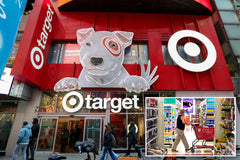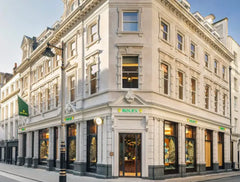
Amazon Prime Day: A Catalyst for Retail Transformation
Table of Contents
- Key Highlights:
- Introduction
- The Rise of Prime Day and Its Impact
- Retailers Respond: The Anti-Prime Day Surge
- Shifts in Consumer Behavior
- Amazon's Struggles with Physical Retail
- The Future of Retail: A Hybrid Approach
- Conclusion
- FAQ
Key Highlights:
- Amazon's Prime Day, held from July 8 to 11, generated record U.S. sales, with estimates suggesting over $750 million in online transactions.
- The event has evolved into an industry-wide phenomenon, driving $24.1 billion in online spending across various retailers, marking a 30.3% year-over-year increase.
- Competitors like Walmart and Target have strategically leveraged Prime Day to boost foot traffic in their physical stores, marking a shift in consumer shopping behavior.
Introduction
The annual Amazon Prime Day, which recently celebrated its tenth anniversary, has grown far beyond its origins as a single-company sales event. Initially designed to bolster Amazon's market presence, the promotion has transformed into a significant industry-wide occasion that reshapes consumer shopping habits and retail dynamics. This year’s Prime Day, which took place from July 8 to 11, has not only set records for Amazon but also triggered innovative responses from major competitors, highlighting a broader shift in the retail landscape. As e-commerce continues to evolve, the strategies employed by both Amazon and its rivals reveal a compelling narrative about adaptation, competition, and the future of shopping.
The Rise of Prime Day and Its Impact
Amazon’s Prime Day has become synonymous with deep discounts and exclusive deals for its members. However, the promotional event's impact extends well beyond the confines of Amazon’s platform. According to estimates from e-commerce consulting firm Momentum Commerce, Prime Day generated over $750 million in online transactions in the U.S. alone this year. This reflects a modest growth of 4.9% compared to the previous year, showcasing that even in a challenging consumer economy, there is a strong demand for online shopping opportunities.
However, a more profound transformation is evident in the total spending across the e-commerce sector during this period. Adobe Analytics reported that Prime Day catalyzed $24.1 billion in online spending across various retailers, a staggering increase of 30.3% from the previous year. This surge underscores how Prime Day has evolved into an industry-wide moment, drawing in consumers and encouraging them to spend in ways that exceed traditional sales periods like Black Friday.
Retailers Respond: The Anti-Prime Day Surge
In response to Amazon’s promotional tactics, competitors have ramped up their own sales events to capture consumer interest. Walmart, for example, has hosted its “Deals” event concurrently with Prime Day since 2015. This year, the retail giant capitalized on its vast network of over 10,000 physical locations to enhance its promotional effectiveness. By offering in-store discounts alongside online deals, Walmart created an appealing shopping experience that Amazon could not replicate, given its limited presence in brick-and-mortar retail.
Moreover, market research from Passby revealed an intriguing trend: traditional retailers like Macy’s, Nordstrom, and Kohl’s experienced double-digit increases in foot traffic during Prime Day. This "anti-Prime Day" surge is attributed to strategic initiatives aimed at luring customers away from online shopping and back into physical stores. James Ewen, Passby’s marketing VP, noted that retailers like Target and Macy’s deployed aggressive in-store promotions and marketing campaigns that coincided with Prime Day, effectively redirecting consumer attention.
Shifts in Consumer Behavior
The evolving landscape of retail dynamics signifies a notable shift in consumer behavior. As shoppers become increasingly savvy and fatigued by constant online promotions, their loyalty is no longer guaranteed to e-commerce giants. The rise of promotional strategies that blend online and in-store experiences has created a more level playing field. Retailers are recognizing the importance of physical presence in a digital-first world, which has prompted many to innovate their approach to customer engagement.
The significant foot traffic gains reported during Prime Day also highlight a growing preference among consumers for tactile shopping experiences. Retailers that successfully integrate online conveniences with the sensory aspects of in-store shopping are likely to thrive in this new environment. This approach not only enhances customer satisfaction but also fosters brand loyalty, as consumers appreciate the flexibility of choosing between online and offline shopping.
Amazon's Struggles with Physical Retail
Despite its dominance in the online retail sector, Amazon has faced challenges in successfully transitioning its business model to include physical retail. The company’s Whole Foods grocery chain, while growing to an estimated net sales of $21 billion in 2024, still represents a small fraction of the overall grocery market dominated by competitors like Kroger and Albertsons. As reported by The Wall Street Journal, Amazon's attempts to establish a robust network of physical stores have not yielded the anticipated results, leaving the company vulnerable to the competitive strategies employed by other retailers.
The dichotomy between Amazon's online success and its physical retail struggles underscores the complexities of consumer engagement in a changing market. As traditional retailers adapt to the increasing influence of e-commerce, Amazon's inability to create a successful brick-and-mortar strategy may hinder its growth potential in an increasingly competitive environment.
The Future of Retail: A Hybrid Approach
Looking ahead, the retail landscape is poised for further transformation as companies continue to navigate the interplay between online and offline shopping. The success of promotional events like Prime Day has proven that consumers are eager to spend, but their preferences are also shifting. Retailers that embrace a hybrid approach—melding digital and physical experiences—are likely to lead the charge in this new era of retail.
For instance, the integration of augmented reality (AR) and virtual reality (VR) technologies could enhance the in-store shopping experience, allowing customers to visualize products in their own spaces before making a purchase. Additionally, leveraging data analytics to personalize marketing strategies and promotions can help retailers build stronger connections with consumers, fostering loyalty and repeat business.
Conclusion
Amazon Prime Day has undeniably reshaped the retail landscape, transforming from a singular event into a broader phenomenon that influences shopping habits and market dynamics across the industry. As competitors like Walmart and Target adeptly respond to this evolving environment, the battle for consumer attention intensifies. The interplay between online and offline retail will likely define the future of shopping, challenging companies to rethink their strategies for engaging customers. With consumers increasingly seeking a seamless blend of convenience and experience, the next phase of retail will be characterized by innovation, adaptability, and a commitment to meeting the diverse needs of shoppers.
FAQ
What is Amazon Prime Day? Amazon Prime Day is an annual sales event exclusive to Amazon Prime members, featuring significant discounts on a wide range of products. It has evolved into a major shopping event that influences other retailers to offer competing promotions.
How much did Amazon Prime Day generate in sales this year? This year, estimates suggest that Amazon generated over $750 million in online transactions during Prime Day. Overall, the event helped drive $24.1 billion in online spending across various retailers.
How have competitors responded to Amazon Prime Day? Competitors like Walmart and Target have launched their own sales events that coincide with Prime Day, leveraging both online and in-store promotions to attract consumers and increase foot traffic to their physical locations.
What trends are shaping the future of retail? The future of retail is being shaped by a hybrid approach that combines online and offline experiences. Retailers are increasingly recognizing the importance of physical presence and are adopting innovative strategies to enhance customer engagement.
Why is Amazon struggling with physical retail? Despite its online dominance, Amazon has struggled to establish a successful physical retail presence, as evidenced by its Whole Foods chain’s limited market share. The challenges faced in this area highlight the complexities of connecting with consumers in a brick-and-mortar environment.
Potenzia il tuo ecommerce con le nostre analisi e aggiornamenti settimanali!
Rimani aggiornato su ciò che sta accadendo nel mondo del commercio
Indirizzo email
Selezionato per Te

23 July 2025 / Blog
Target Repositions Its Pricing Strategy: A Look at the New Price Match Guarantee Policy
Leggi di più
23 July 2025 / Blog
The Push for Reinstating Tax-Free Shopping in the UK: A Retail Industry Perspective
Leggi di più
23 July 2025 / Blog


